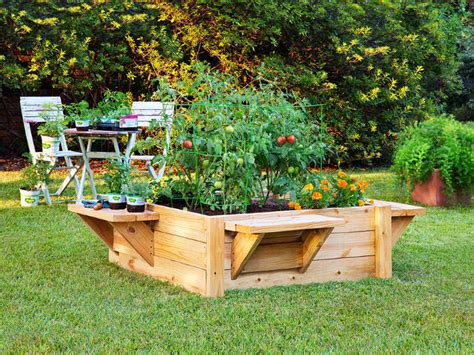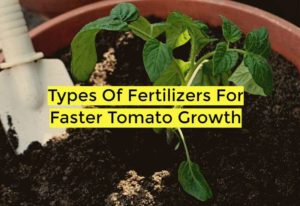Growing tomatoes in a raised bed garden is a simple and straightforward process. No soil issues, fewer weeds, and no digging. Just mix some compost and mulch into the raised bed soil at the start of each season, and you’re ready to start growing tomatoes.
One of the most common concerns when growing tomatoes in a raised bed are how many tomato plants are required for optimal growth. In a 4×4 raised bed, how many plants are too many? Keep reading to know more about tomato plant spacing in raised bed gardens in feet, inches, and even centimeters.
By estimation, it is safe to say that five plants are more than enough for optimal plant growth in a 4×4 raised bed. One plant in each corner and one in the center of the raised bed. However, there are plant spacing considerations to factor in. Here is the breakdown of spacing requirements for indeterminate and determinate tomatoes.
How do you space tomato plants in a 4×4 raised bed

I mentioned earlier that there are a few considerations for planting spacing. By far, the most important factor is whether you are a determinate or indeterminate tomato variety
Have a challenge watering? Read more: How Often Should I Water My Raised Vegetable Garden? Don’ts and Dos
Indeterminate Tomato Variety

Indeterminate tomatoes are vining plants. They keep growing throughout the season, reaching heights as high as 12 feet. They keep producing fruits as they grow taller.
As each branch forms, new fruit clusters form and grow into fruits. It continues throughout the growing season until they die of frost. The yield is slow and steady, lasting the entire season.
Because these plants spend so much energy and time growing tall, the ripening process of indeterminate varieties takes a little longer.
Most tomato varieties, such as heirloom tomatoes, beefsteak tomatoes, Brandywine tomatoes, and Sungold tomatoes, are indeterminate.
If you’re using cages and trellis to grow indeterminate varieties, 3-4 feet spacing (36 to 48 inches and 91 to 193 cm) is ideal. It means that you can grow four plants in a 4×4 raised bed.
Only 2-3 plants are appropriate if your plants will sprawl over the ground, which is not a good thing; you should always support your plants with cages or trellis.
You might also like: Tying Up Tomato Plants (Tomato Staking DIY)
Determinate Tomato Variety

They are short-term crops. Once they get to a certain size, they mature, produce fruit for a few weeks, and die soon.
The first harvest is the beginning of the end for this variety. Sometimes, the first harvest is the last, with no new fruits forming.
Because they don’t grow very tall but spread their branches wide, determinate tomato plants are also bush plants. They only reach a maximum length of 4-5 feet.
Determinate tomato plants don’t need to be pruned because they stop growing. Fruits will weigh the plant down at maturity, so it is up to you to use a cage or a trellis to support your plants.
If you choose the trellis technique, leave a 2 to 2.5 feet space between plants in the 4×4 ( 24-30 inches) (60-76 centimeters). You easily fit six plants in the raised bed this way.
However, keep in mind that you’ll need to use a trellis or cage and provide many nutrients for that many plants.
However, that space is too tight to let tomatoes sprawl on the ground. For that, leave a space of between 3-4 feet, 36 inches, and 91 cm.
Letting tomatoes sprawl on the ground has its disadvantages. To be safe, use trellis or cages to support your plants.
While you’re at it, read: 6 Tomato Pruning Mistakes That Keep You Up At Night
Here are a couple of things you should know about spacing to get you rolling
There are a few things you should know about spacing. Let’s do some math (sorry!).
A 4×4 raised bed has 16 square feet of space. And a single tomato plant requires a minimum of 4 square feet of space to thrive. So for each 4×4 bed, you can only fit four tomato plants which is more than you would for determinate varieties. Some indeterminate plants require even more space, such as 6-8 square feet per plant.
However, if you’re growing determinate tomato plants, you can grow 5 or 6 plants. Some tomato growing methods and varieties only require 1 square foot per plant. That’s fantastic.
Spacing secrets for tomato plants in a 4×4 raised bed

1. Choose the right soil. Highly underrated and seemingly obvious, I know. But it is one of the most important secrets for growing tomatoes in a raised bed.
Tomato plants perform well in acidic soil with a pH of 6 to 7 and good drainage. Before planting, a quick soil test will help you figure out whether you have the right soil.
The good thing about raised beds is that you can change the soil anytime.
2. The second secret is to monitor the nutrient levels in the 4×4 raised beds. Sixteen square feet is such a tiny space.
Young and growing plants can consume all the nutrients in the soil like that! That is why you need to add fertilizer after a given period.
I prefer organic fertilizers. Tomato plants, as we all know, are heavy feeders. They require a lot of nutrients to grow tall and produce a large yield.
Indeterminate tomato plants will need some pruning because they can grow up to 12 feet tall and cover all available space.
Pruning will reduce the competition for resources and space.
Tomato plants, as I previously stated, are heavy feeders. To thrive, they also require a lot more water.
In a raised bed, there’s even more water. Always keep an eye on the soil’s moisture level. Water them if they appear to be dry.
Early in the morning or before sunset is the best time to swim. Water slowly and deeply.
Online, there’s also a lot of misinformation regarding spacing. Some say one crop is grown in one square foot. For some techniques or variants, this may be true. However, this will be utterly devastating for the vast majority of varieties. You’ll end up in a tomato jungle with really no fruit.
To read more about tomatoes check out these links:
9 Tips For Maintaining Tomato Plants





[…] How many tomatoes fit a 4×4 raised bed garden […]